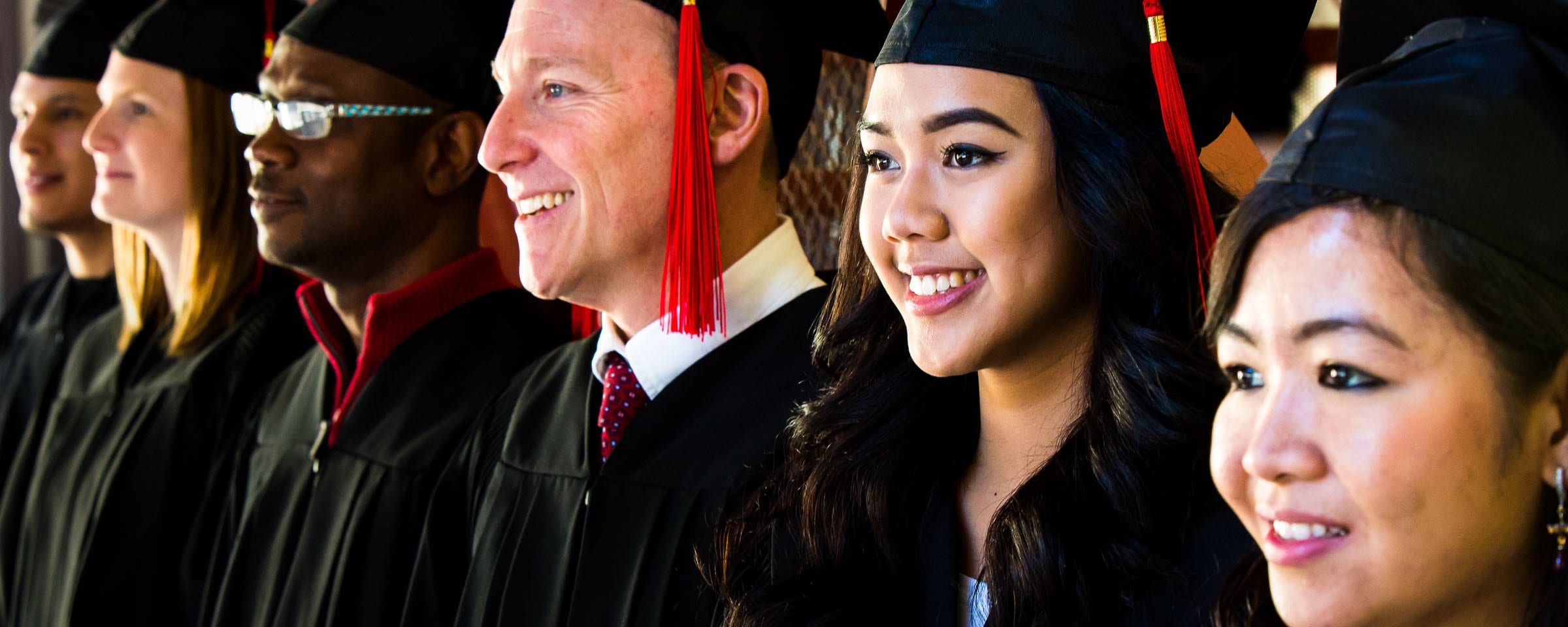ConEd grad honours grandmother’s memory by helping seniors in care
 In his grandmother’s final years, Vernon Cook wasn’t able to visit her as much as he wanted – she lived in a personal care home outside of town and getting out to see her was tough. But now he’s making it up to seniors everywhere.
In his grandmother’s final years, Vernon Cook wasn’t able to visit her as much as he wanted – she lived in a personal care home outside of town and getting out to see her was tough. But now he’s making it up to seniors everywhere.
“She passed away and I just felt awful that I couldn’t do more,” Cook says. “I just needed to do something for the elderly, for my grandma, because I couldn’t see her very much. And I thought I could do something to give back.”
The way Cook chose to give back was by completing the Therapeutic Recreation Facilitator for Older Adults program at Red River College and working at Southeast Personal Care Home. Cook, who is First Nations from Peguis, was raised to honour and respect his elders, so the program seemed like a natural fit.
He was the first Aboriginal man to graduate from the program, and before he even finished he was offered a position at Southeast, the first Aboriginal-focused care home in the city.
Southeast aims to respect holistic Aboriginal values and cultural traditions that nurture the health and well-being of each person. For example, the facility brings in elders and holds sharing circles, and features a ceremonial room for residents, Cook says.
“The residents are allowed to come in [to the ceremonial room] and smudge. It’s our praying, our meditating,” he explains. “It’s with sweet grass, sage, tobacco, and whatnot.”
Working in a care home where 90 per cent of residents are First Nations presents its own challenges, however, as many are residential school survivors.
“They’re very closed in,” he says of the survivors. “When they wanted to talk about it they would, but then there were triggers as well that would get them very upset. We would not bring it up, but when they wanted to talk, that’s why we would bring elders in or hold a sharing circle.”
Cook enjoys the challenges presented by the job.
“It’s a constant learning process with this career. You always get new ideas from other facilitators,” he says. “It’s a learning thing: ‘Let’s try this, let’s try that and see what works with different people.’ People, they’re all at varying levels of their cognitive ability and what they can do. It all depends on their care plans.”
One of the recreational programs Cook implemented was noodle hockey, which was a huge hit amongst residents.
“They went crazy on it, they whacked the heck out of those beach balls. They’d go at it for an hour,” he says with a laugh.
He also found another thing that appeals to residents: baking bannock.
“I realized they weren’t getting served it and that’s our number one treat amongst elders, and myself. And I thought one day, ‘You know what, I’m going to make it for them and see if they like it.’ They loved it and [now] that is the biggest program they have there.”
Cook makes fry bannock using his own secret technique, and the process takes between three and four hours. But the payoff is huge.
“Even residents that don’t participate would come down [to eat], I guess the smell would do something.”
Cook says RRC’s Therapeutic Recreation Facilitator program was excellent, but it was the instructors that were especially powerful.
“There was a lot I enjoyed [about the program]. What made it really good was [instructor] Terry Maryk. He inspired me to keep it up and he was very good. He’s an awesome instructor.”
Cook is honoured to be featured in RRC’s Our Grads Get Hired billboard campaign.
“It was awesome, I couldn’t believe it,” Cook says. “My family is just proud of me, my friends are going crazy about it.”
On his quest to continually better himself through education, Cook has returned to school to study massage therapy. He hopes to one day open his own business.
He first learned about hand massages while studying at RRC.
“It’s a good sensory stimulation and it circulates the blood from the hands with the elderly.”
While working at Southeast, he saw how massage can increase quality of life and hopes to specialize in treating elderly patients.
Profile by Stacy Cardigan Smith (Creative Communications, 2006)
